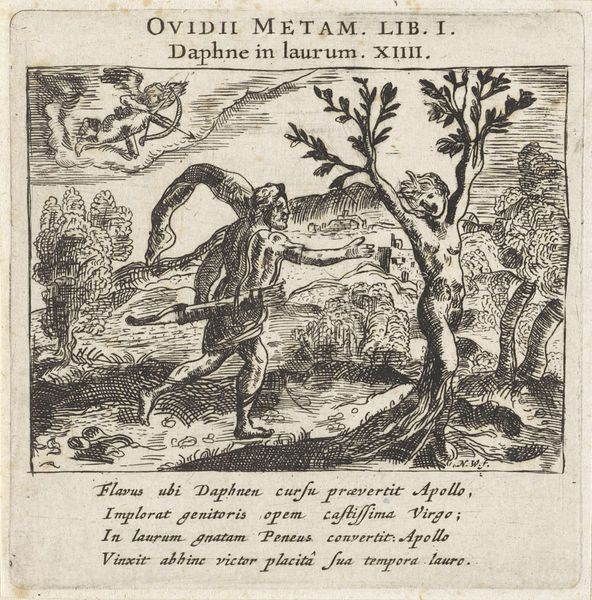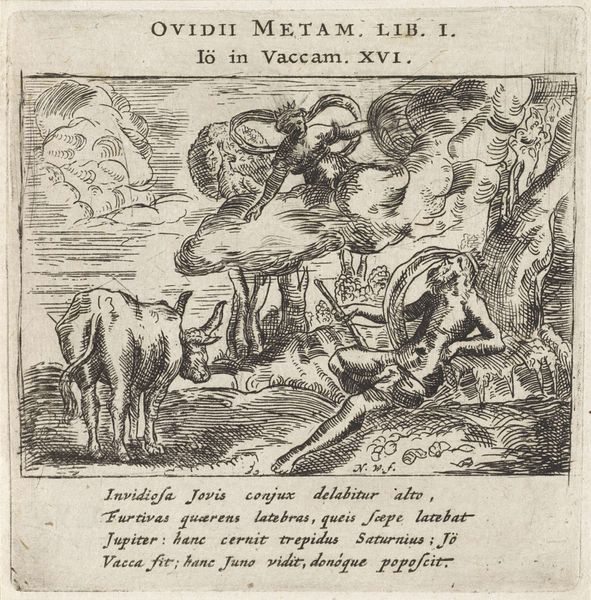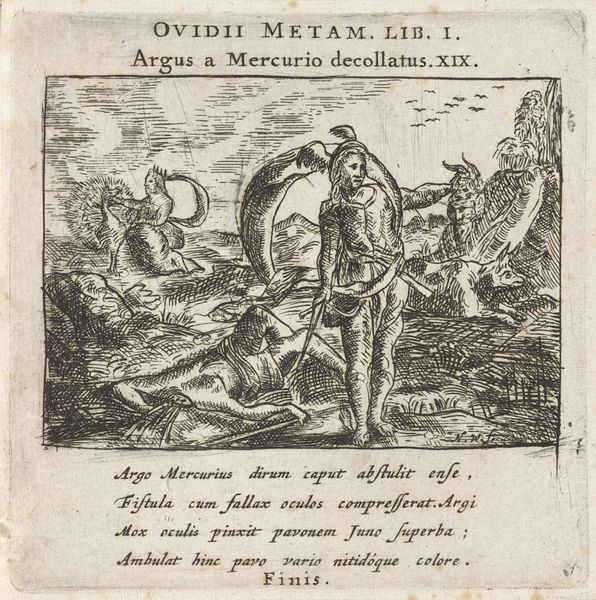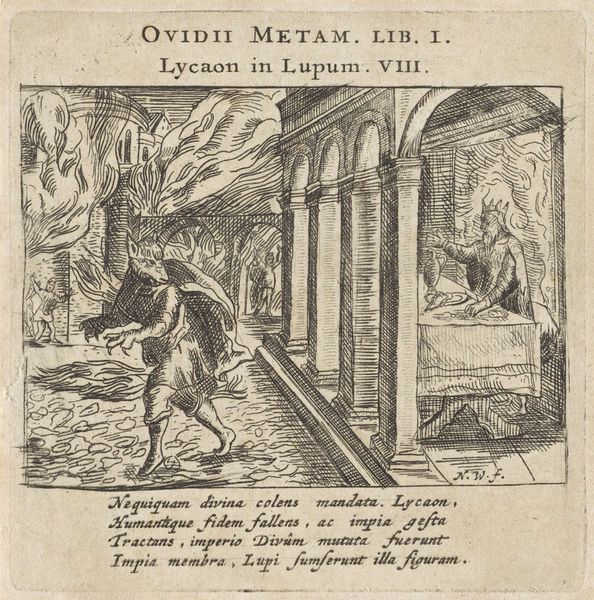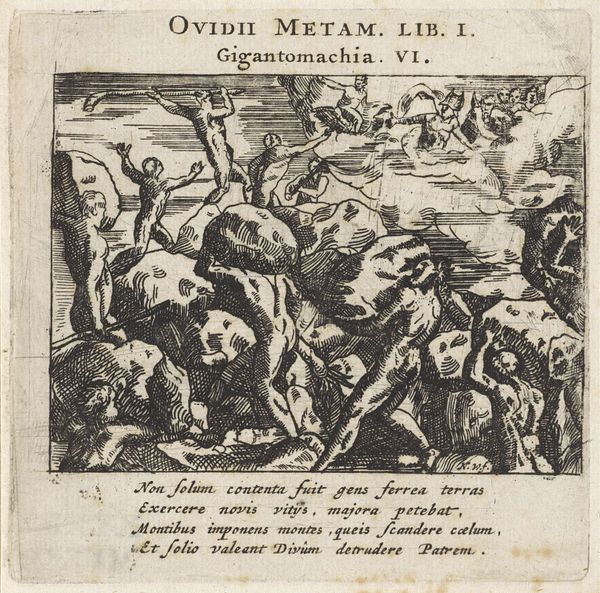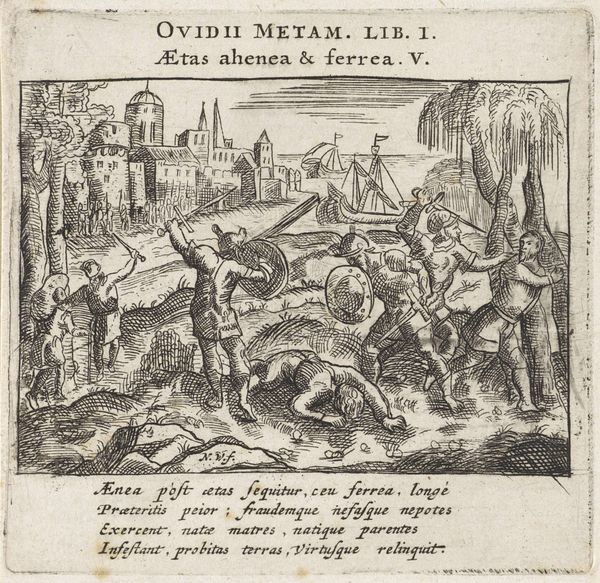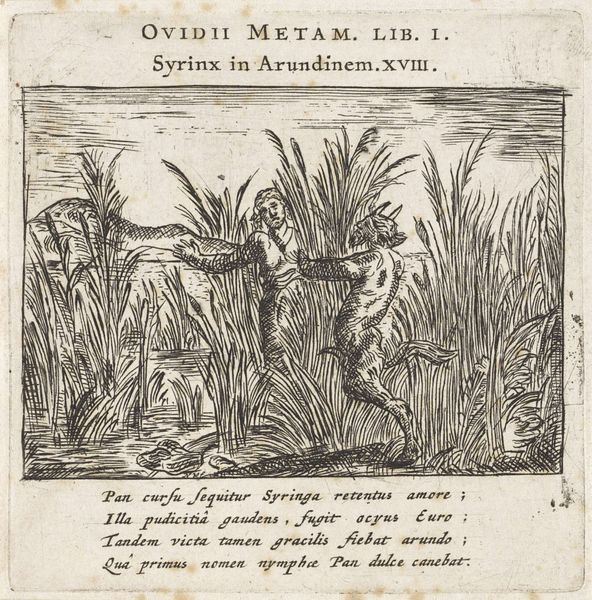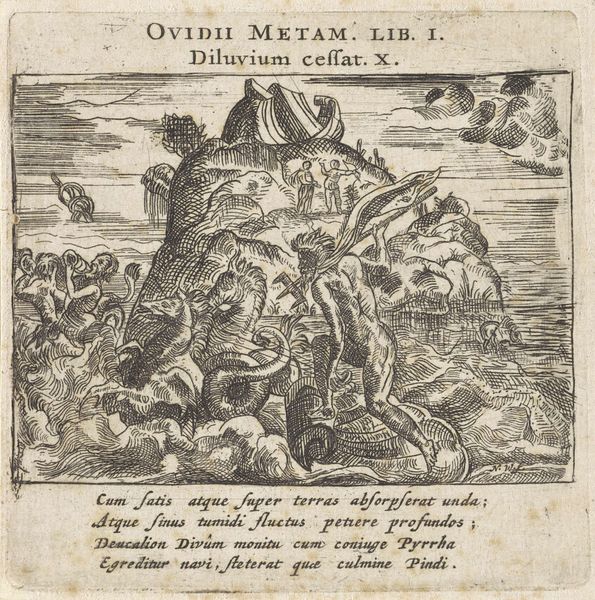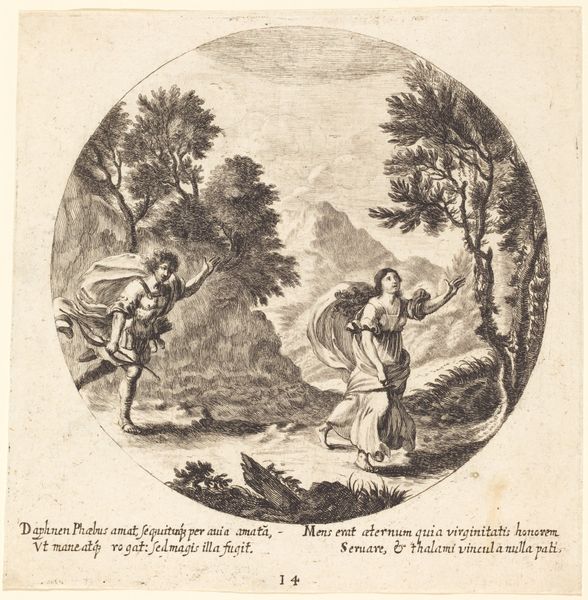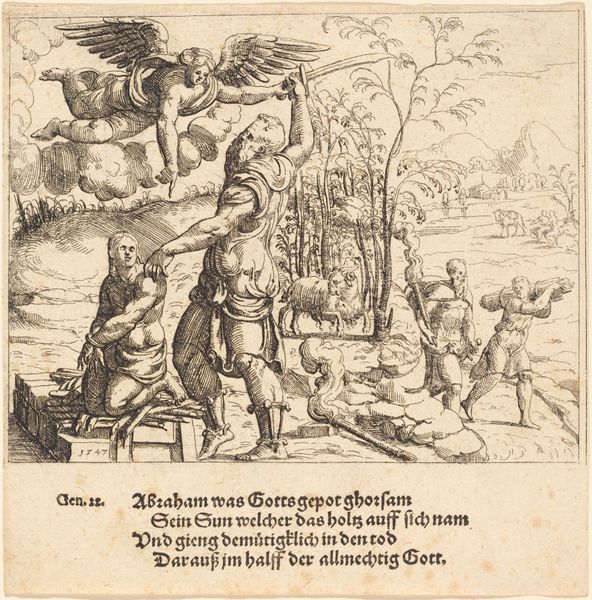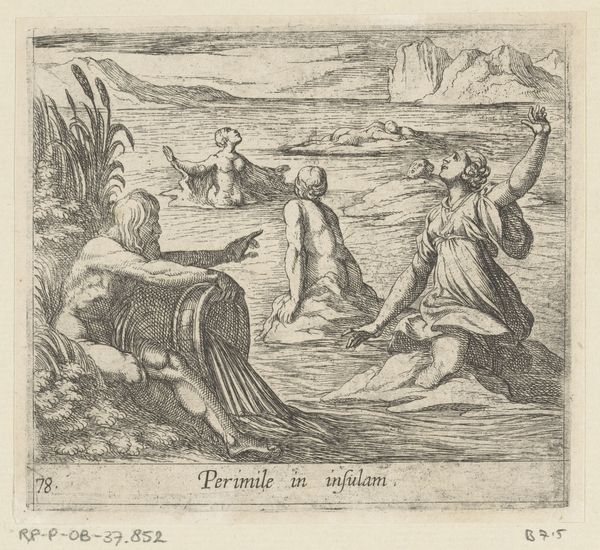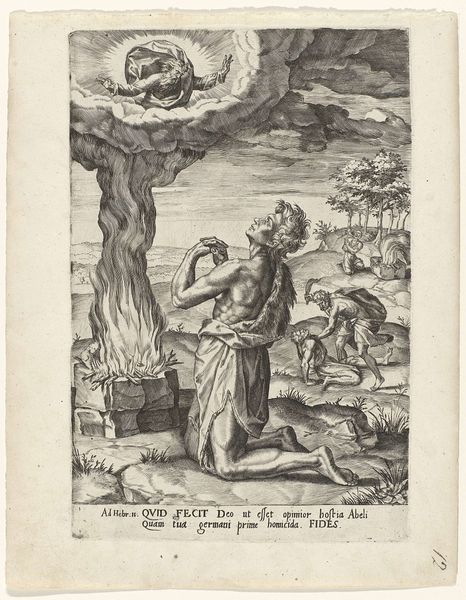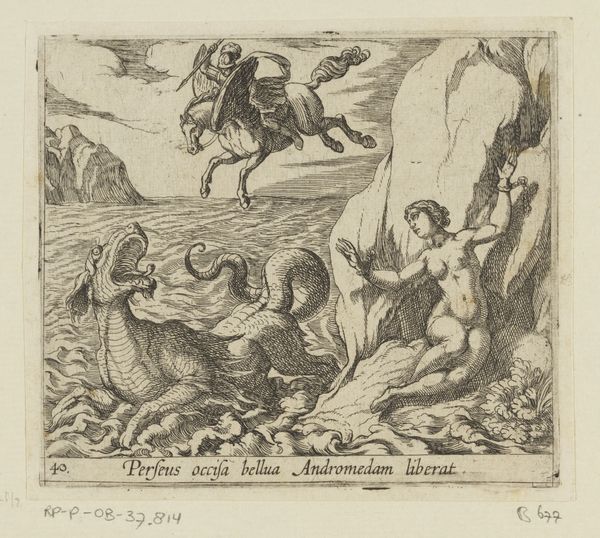
print, etching, engraving
#
allegory
#
narrative-art
#
baroque
# print
#
etching
#
landscape
#
figuration
#
history-painting
#
engraving
Dimensions: height 87 mm, width 89 mm
Copyright: Rijks Museum: Open Domain
Curator: This etching, “Apollo en Daphne,” created by Nicolaes Cornelisz. Witsen in 1659, captures a pivotal moment from Ovid's Metamorphoses. The print depicts Apollo's pursuit of the nymph Daphne, rendered with remarkable detail in the figures and landscape. Editor: My first impression is of stark desperation. Despite the relatively small scale of this etching, there is an intense energy that almost explodes from the image. The fleeing figure, her body in full flight, nearly morphing with the trees! Curator: Absolutely, and it’s vital to remember the context: Daphne's flight represents resistance against unwanted advances, and a radical claim over her own body. The transformation into a laurel tree becomes an allegory for bodily autonomy and self-determination. It also ties into broader conversations around agency. Editor: Yes, the laurel carries deep symbolic resonance – victory, poetry, and perhaps more tragically here, enforced purity. I’m drawn to the contrast between the rough textures of the forest – rendered almost chaotically – and the relative smoothness of their limbs. Witsen seems to use line work here to convey not only form but also psychological state. Curator: I agree. Notice how the trees around Daphne almost seem to reach out, as if nature itself is offering her protection, emphasizing this act of self-preservation. Conversely, Apollo is more exposed, out in the open; a figure of frustration set against a wide horizon. Editor: And he’s still partially draped in classical garb! A somewhat futile clinging to past identities, now exposed and rather awkward amidst such raw nature. This work powerfully embodies the complexities of choice and destiny, reflecting a cultural memory deeply embedded within visual symbols. Curator: Considering current conversations around consent and power dynamics, the piece carries potent weight, inviting critical examination of similar themes across eras and art forms. This work by Witsen offers an invaluable intersectional vantage point for interpreting themes of oppression and resistance through mythology. Editor: Indeed, examining it through the lens of enduring symbolism provides a space to question prevailing beliefs and their impact on personal identity and shared human experiences. Curator: It reminds us that images often have the power to make us ask uncomfortable questions. Editor: And, also to invite healing.
Comments
No comments
Be the first to comment and join the conversation on the ultimate creative platform.

